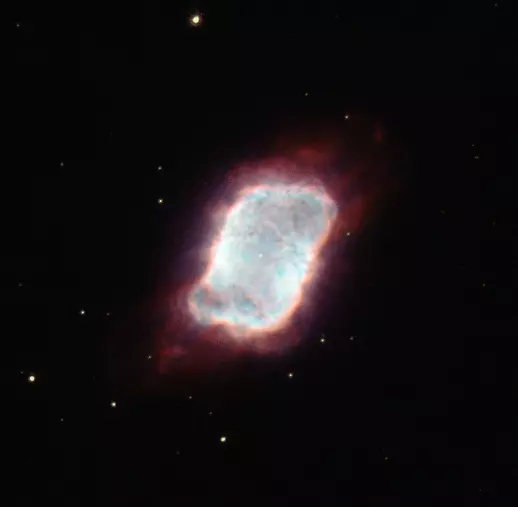The Phantom Streak Nebula (NGC 6741) is a planetary nebula located in Aquila constellation (the Eagle). It lies approximately 7,000 light years from Earth.
The nebula was discovered by American astronomer and physicist Edward Charles Pickering in 1882. It is a bright, but relatively small object, with an apparent size of 0.1 arc minutes and apparent visual magnitude of 11. It is not easily found in small telescopes. The nebula’s coordinates are 19h 00m 02.3s (right ascension) and -00°31’23” (declination).

Phantom Streak Nebula, image: ESA/Hubble and NASA
The Phantom Streak Nebula was created when an aging star’s outer layers of gas were ejected into space. These layers of gas now glow in the hot, ultraviolet light emitted from the star’s remnant at the nebula’s core.
Phantom Streak is a dense, massive, fast evolving nebula that has been undergoing a recombination phase for the last 200 years as a result of the sudden drop in luminosity of the central post-AGB star, a white dwarf, that has stopped burning hydrogen and is now cooling down.
Even though it is classified as a planetary nebula, there is no planet responsible for the creation of the Phantom Streak Nebula. The term planetary came about because the gas clouds looked a bit like the outer planets of the solar system in astronomers’ telescopes in the 18th century.